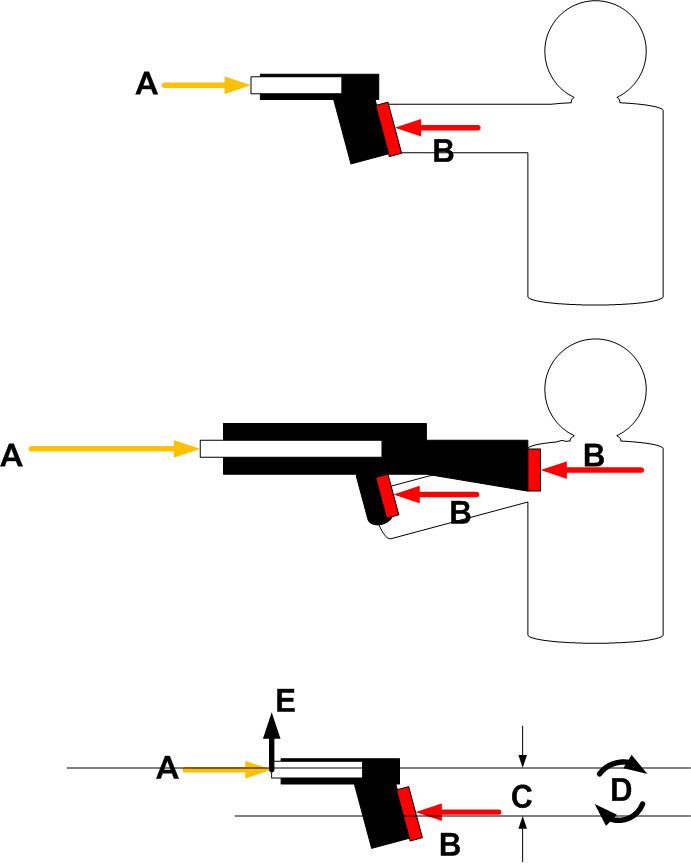 | ||
The interchangeable terms muzzle rise, muzzle flip and muzzle climb refer to the tendency of firearms or pneumatic arms front end (muzzle end of the barrel) to rise up after firing.
Muzzle climb more specifically refers to the elevation of muzzle of the firearm, caused by combined recoil from multiple shots being fired in quick succession. It has an adverse effect on accuracy of automatic and rapid-fire semi-automatic firearms, causing a target to be overshot.
The primary reason for muzzle rise is that for nearly all firearms, the centerline of the barrel is above the center of contact between the shooter and the firearms' grips and stock. The recoil forces from the bullet being fired and the propellant gases exiting the muzzle act directly down the centerline of the barrel. If that line of force is above the center of the contact points, this creates a couple, a rotational force. That couple causes the firearm to rotate, and the muzzle end to rise upwards.
Muzzle rise can be reduced by:
Designs
A number of firearms have been designed specifically to address the issue of muzzle rise.
The Jatimatic submachine gun is an example of a firearm where the bore axis is inclined against the bolt and the rest of the firearm in order to redirect the recoil force slightly upwards. The KRISS Vector submachine gun uses a more elaborate mechanical articulated mechanism which allows the block and bolt to recoil not just rearward like most other firearms, but back and then 'vectored' down off-axis along a rail system behind the weapon's magazine well to reduce muzzle rise and felt recoil.
The Hudson H9, introduced in 2017, is based on the M1911 but has the recoil spring down in front of the trigger guard, resulting in a barrel very close to the top of the shooter's grip, with the creator claiming that, "the recoil impulse from that recoil spring is directed into the meat of your hand."
